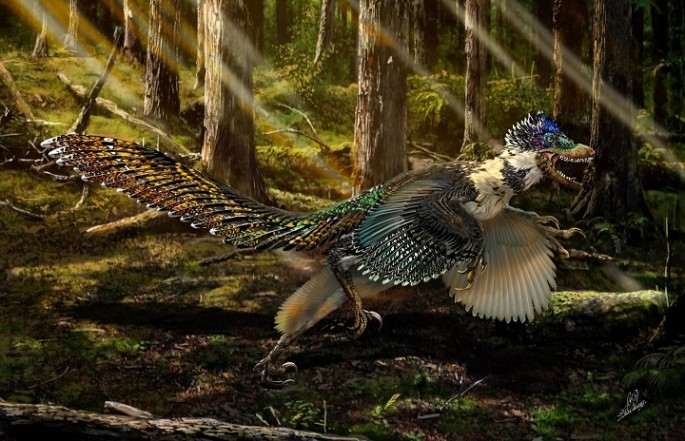Scientists have discovered ancient feathered fossils of a new dinosaur species that are close relatives of the velociraptor, in Jinzhou, China.
Called the Zhenyuanlong suni, this bizarre dinosaur appears to be some sort of bird hybrid, according to researchers. The fossil is dated 125 million years old which is also remarkable since the fossil was uncovered to be almost complete where its bird like wings possess qualities of well evolved feathers in pristine conditions.
According to co-author of the study, paleontologist Steve Brusatte from the University of Edinburgh, it's confirmed that this velociraptor had feathers however, scientists still do not know what those feathers look like since they are not that well preserved to fossilize soft tissues.
Scientists do know that the Zhenyuanlong thrived in quiet lakes which were buried by volcanic activity that's why this fossil skeleton was covered in feathers.
This fossil does not reveal how much feathers this velociraptor was covered in, however, it's made certain that it can be mistaken as one of the modern birds today.
Brusatte confirms that this dinosaur indeed looks like a bird, upon closer examination of its wing, where it appears to be similar to eagles or vultures in its overall shape. He also adds that if the Zhenyuanlong is still alive, they can be mistaken for an eagle or even a turkey.
However, this unique velociraptor possesses short wings that can be futile for any sort of flight. Researchers now believe that this species originated from dinosaurs that have the ability of flight but lost that ability when it began using its wings for display.
Researchers believe that if this theory is correct, this species could be a precursor to modern birds that are known for elaborate feathery displays such as the peacock. Brusatte says that this can be a new mystery of how relatively large dinosaurs with short arms and large wings began using its wings for display purposes only.
This study is published in the journal, Scientific Reports.



























